

Safety Precautions
Always wear protective gear, including gloves and safety glasses, when operating the Craftsman power washer. Keep children away from the equipment. Never repair high-pressure hoses or leaking connections with sealants. Follow all instructions in the manual to ensure safe operation and avoid voiding the warranty. Proper usage guidelines must be strictly adhered to.
1.1 Important Safety Considerations
Before using your Craftsman power washer, read the entire manual to understand safety guidelines. Always wear protective gear, including safety glasses and gloves, to prevent injury. Keep children away from the equipment, as they should not operate it under any circumstances. Never attempt to repair high-pressure hoses or connections with sealants, as this can lead to further damage. Failure to follow instructions may result in equipment damage or void the warranty. Ensure the area is clear of obstacles and flammable materials. Be cautious of the high-pressure jet, which can cause serious injury. Properly store the washer in a dry, secure location when not in use. Follow all safety precautions to ensure safe and effective operation.
1.2 Proper Usage Guidelines
Always operate the Craftsman power washer on a stable, level surface to maintain balance. Use the recommended pressure settings for different tasks to avoid damaging surfaces. Never aim the nozzle at people, pets, or windows, as the high pressure can cause harm. Keep the nozzle at least 12 inches away from surfaces to prevent damage. Use the correct nozzle tips for specific cleaning tasks, as specified in the manual. Avoid using the washer in extreme weather conditions or near open flames. Regularly inspect the hose and connections for wear or leaks. Properly secure the high-pressure hose to prevent kinking or tangling. Follow these guidelines to ensure efficient and safe operation of your Craftsman power washer.
1.3 Protective Gear Recommendations
Always wear appropriate protective gear when operating the Craftsman power washer to minimize risks. Safety glasses or goggles are essential to protect your eyes from debris. Use a face mask or respirator when cleaning surfaces that may release dust or chemicals. Wear hearing protection, as prolonged exposure to engine noise can cause hearing damage. Gloves are recommended to improve grip and protect hands from pressure spray. Long sleeves and pants can prevent skin irritation or abrasions. Sturdy, closed-toe footwear is necessary to avoid injuries from heavy objects or sharp edges. Ensure all protective gear fits properly and remains secure during operation.
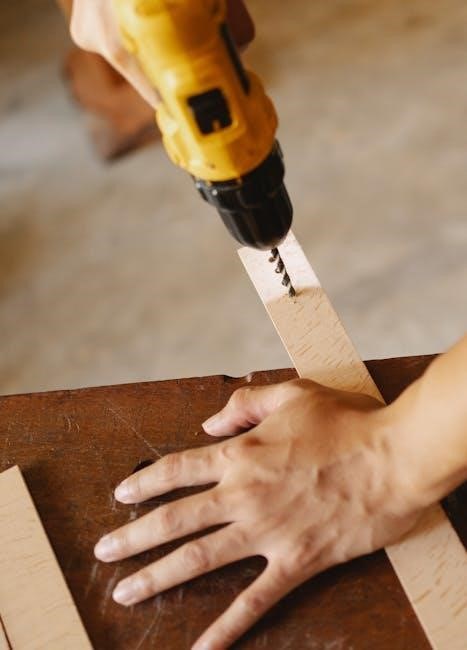
Assembly and Installation
Begin by carefully unpacking and inventorying all components. Attach the high-pressure hose securely to the pump. Follow the manual for proper installation of accessories like spray guns and lances. Ensure the unit is placed on a stable, level surface before first use;
2.1 Unpacking and Inventory
Begin by carefully unpacking the power washer and verifying all components against the provided inventory list. Inspect each part, including the engine, pump, high-pressure hose, spray gun, and nozzle tips, for any visible damage. Ensure the detergent tank, wheels, and handle are included and undamaged. If any items are missing or damaged, contact customer support immediately. Organize the parts in a clean, dry workspace to prevent loss or misplacement. Refer to the manual for a detailed list of included items and their descriptions. Properly accounting for all components ensures a smooth assembly process and prevents delays. Always handle components with care to avoid accidental damage.
2.2 Attaching the High-Pressure Hose
To attach the high-pressure hose, ensure the engine and pump are turned off and cool. Locate the high-pressure port on the pump and the corresponding coupling on the hose. Align the threaded connections and apply a small amount of Teflon tape to ensure a watertight seal. Tighten the coupling by hand, then use a wrench to secure it firmly. Avoid over-tightening, as this may damage the threads. Inspect the hose for any kinks or twists and straighten it before use. Once attached, turn on the water supply and check for leaks at the connection points. Refer to the manual for specific torque recommendations to ensure a secure and leak-free connection.
2.3 Initial Setup and Preparation
Before first use, ensure all components are properly assembled and inspected. Check the oil level in the engine and add the recommended type of oil if necessary. Fill the fuel tank with the specified grade of gasoline, ensuring it is fresh and suitable for the engine. Inspect the power washer for any damage or wear, paying attention to hoses, nozzles, and connections. Ensure all bolts and screws are tightened securely. Prime the pump according to the manufacturer’s instructions to remove any air from the system. Finally, attach the desired nozzle tip and test the spray pattern to ensure proper function. Refer to the manual for specific priming procedures and recommendations for initial startup.
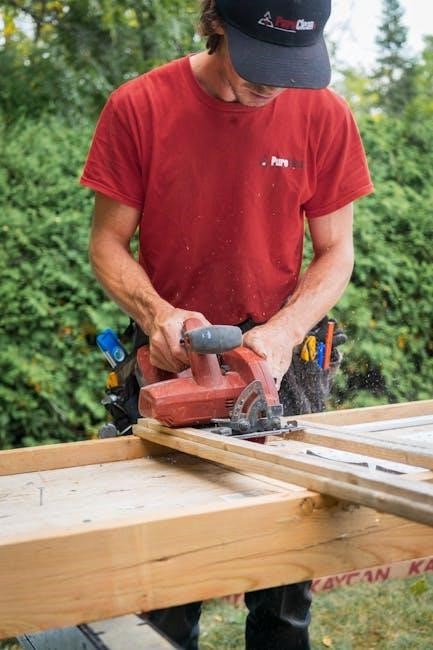
Operating Instructions
Start the engine, adjust pressure settings, and select the appropriate nozzle tip for the task. Always maintain a safe distance and ensure proper ventilation during operation.
3.1 Starting the Engine
To start the engine, ensure the area is clear of obstructions and the power washer is on a level surface. Check the oil level and add if necessary. For gas-powered models, ensure the fuel tank is filled with the recommended fuel type. Prime the engine by squeezing the primer bulb 2-3 times until firm. Move the choke to the “start” position and pull the starter handle firmly. Once the engine starts, allow it to warm up for 30 seconds before adjusting the choke to the “run” position. Always wear safety gear, including eye protection, and ensure proper ventilation to avoid inhaling fumes. Follow these steps carefully to ensure safe and efficient engine operation.
3.2 Adjusting the Pressure Settings
To adjust the pressure settings on your Craftsman power washer, locate the pressure regulator knob, typically found near the pump or on the spray gun. Turn the knob clockwise to increase pressure for heavy-duty tasks like removing stubborn stains or cleaning concrete. For lighter tasks, such as washing vehicles or siding, turn the knob counterclockwise to reduce pressure. Always start with a lower setting and gradually increase as needed to avoid damage. Use the pressure gauge to monitor the PSI level, ensuring it stays within the recommended range for your specific model. Proper adjustment ensures efficient cleaning and prolongs equipment life. Always refer to the manual for specific PSI recommendations for different surfaces.
3.3 Using Different Nozzle Tips
Your Craftsman power washer comes with interchangeable nozzle tips designed for specific tasks. The red nozzle (0-degree) is for high-pressure cleaning of tough surfaces like concrete. The yellow nozzle (15-degree) is ideal for general cleaning, such as sidewalks and driveways. The green nozzle (25-degree) is suitable for lighter tasks like cleaning siding or vehicles, while the black nozzle (40-degree) is for wide-area cleaning or applying detergents. To change nozzles, turn off the engine, release the pressure, and twist the nozzle counterclockwise to remove. Align the new nozzle and twist clockwise to secure. Always use the correct nozzle for your task to ensure efficiency and prevent surface damage. This feature enhances versatility and cleaning effectiveness.
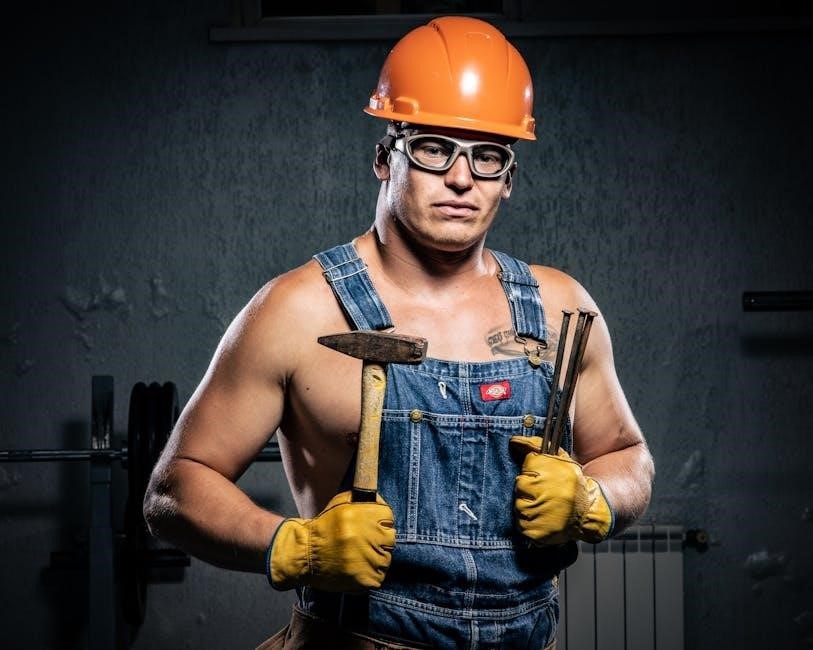
Maintenance and Storage
Regular maintenance ensures optimal performance. Clean the engine, check hoses for damage, and store the unit in a dry, well-ventilated area. Winterize before freezing temperatures.
4.1 Regular Maintenance Tasks
Perform routine checks to ensure your Craftsman power washer operates efficiently. Check the oil level and top it off as needed. Inspect hoses for cracks or damage and replace them if necessary. Clean or replace the air filter to maintain proper airflow. Flush the pump with a cleaning solution to remove debris. Check the spray nozzle for blockages and clean it with a needle or small tool. Regularly inspect the belt for wear and tighten it if loose. Lubricate moving parts to reduce friction and prevent corrosion. Drain the fuel tank and run the engine until it stops to prepare for storage. These tasks ensure reliable performance and extend the lifespan of your power washer.
4.2 Winterizing the Power Washer
To winterize your Craftsman power washer, start by draining all water from the hoses and pump to prevent freezing. Use a pump saver or RV antifreeze to protect the system. Disconnect and drain the high-pressure hose, then store it in a dry place. Add fuel stabilizer to the gas tank and run the engine briefly to circulate it. Store the power washer in a cool, dry area away from direct sunlight. Cover it to protect against dust and moisture. Avoid leaving water in the system, as freezing temperatures can cause damage. Regularly check on the unit during winter to ensure proper storage conditions; This process ensures your power washer remains in good condition for the next season.
4.3 Proper Storage Conditions
Store your Craftsman power washer in a clean, dry, and well-ventilated area. Ensure the surface is level and firm to maintain balance. Avoid exposing the unit to direct sunlight or extreme temperatures. Keep it away from moisture to prevent rust or corrosion. Clean the power washer thoroughly before storage to remove dirt and debris. Use a breathable cover to protect against dust and pests. Store the high-pressure hose separately, coiled neatly to avoid kinks. Ensure all connections are secure and tightly sealed. Check the storage area periodically to ensure no damage or pests. Proper storage helps maintain performance and longevity, ensuring your power washer is ready for use when needed.
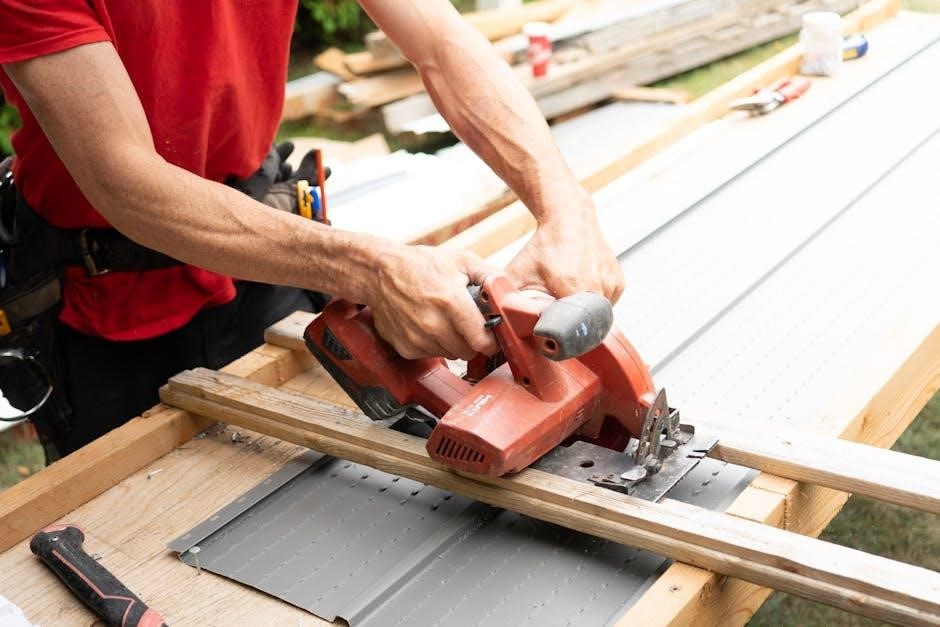
Technical Specifications
The Craftsman power washer features a robust engine, delivering up to 3000 PSI and 2.5 GPM, with a durable pump and 25-foot high-pressure hose for efficient cleaning tasks.
5.1 PSI and GPM Ratings
The Craftsman power washer delivers a maximum pressure of 3000 PSI (Pounds per Square Inch) and a flow rate of 2.5 GPM (Gallons per Minute). These ratings ensure effective cleaning power for various tasks, from light-duty cleaning to heavy-duty applications. The high PSI rating allows for deep dirt removal, while the GPM ensures efficient water usage. For optimal performance, always use the recommended nozzle tips, as they are designed to work within these pressure and flow specifications. Higher PSI settings are ideal for tough stains, while lower settings conserve water and reduce wear on surfaces. Ensure proper nozzle selection to maintain performance and efficiency.
5.2 Engine and Pump Details
The Craftsman power washer features a reliable overhead valve (OHV) engine, designed for durability and consistent performance. The engine is paired with a high-quality axial cam pump, which ensures smooth operation and long service life. The pump is constructed with durable materials, including a brass head and steel pistons, to withstand heavy use. A thermal relief valve is integrated to prevent overheating during continuous operation. Regular maintenance, such as oil changes using SAE 30 or 10W-30 oil, is essential to maintain engine health. Proper care of the pump involves checking and replacing worn seals and ensuring the oil level is adequate before each use.
5.3 Hose Length and Diameter
The Craftsman power washer comes with a high-pressure hose measuring 25 feet in length and 1/4 inch in diameter, providing flexibility and reach for various cleaning tasks. The hose is designed to withstand the system’s maximum pressure rating, ensuring durability and performance. For optimal use, avoid kinking or bending the hose excessively, as this can damage the inner lining. The 1/4-inch diameter ensures a balanced flow rate, supporting efficient cleaning. Regular inspection for signs of wear, such as cracks or abrasions, is recommended to maintain performance and safety. Always store the hose in a cool, dry place, coiled properly to prevent damage and extend its lifespan.
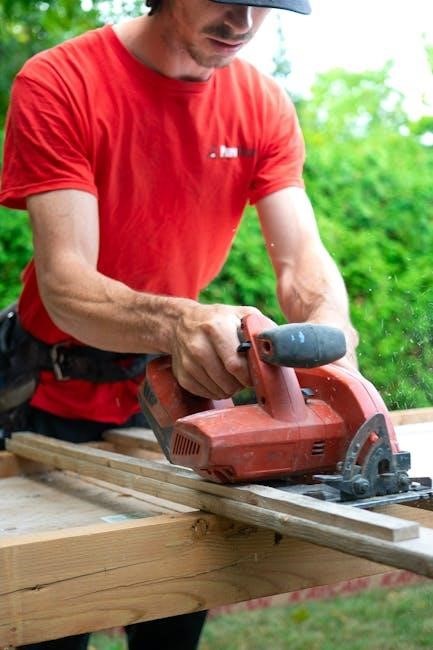
Environmental Impact
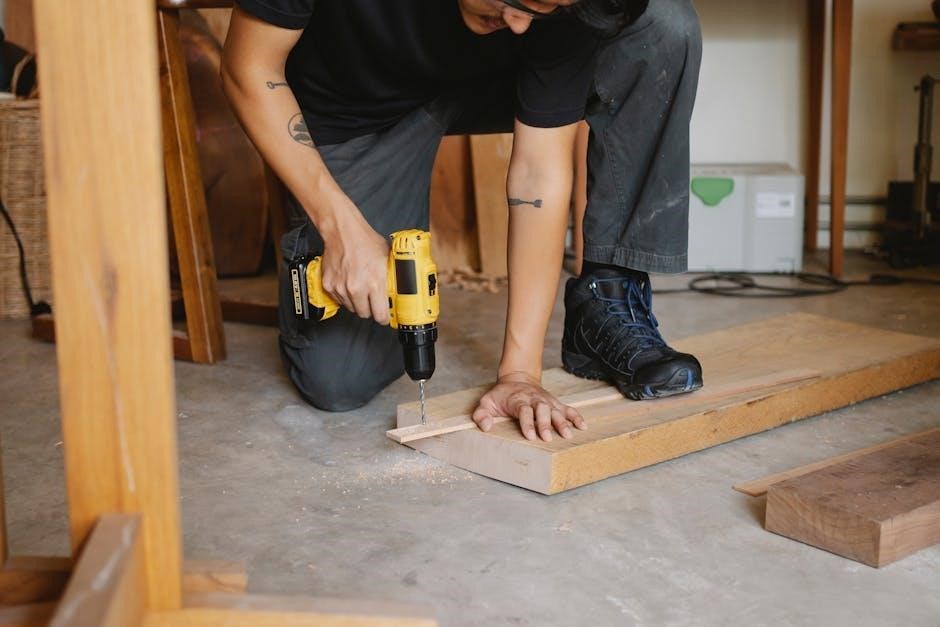
Conserve water by using the power washer efficiently. Choose eco-friendly cleaning agents to minimize chemical runoff. Dispose of waste properly and recycle packaging materials to reduce environmental footprint.
6.1 Water Conservation Tips
To minimize water usage, always use the correct nozzle for the task to avoid excess flow. Adjust the pressure setting to the lowest effective level for the job. Turn off the washer when not in use to prevent unnecessary water flow. Regularly inspect and maintain the hose and connections to eliminate leaks. Consider using a low-flow setting for light cleaning tasks. Avoid using the power washer for small areas that can be cleaned manually. Store water-sensitive surfaces when not in use to reduce cleaning frequency. By following these tips, you can significantly reduce water consumption while maintaining cleaning efficiency.
6.2 Reducing Emissions
To minimize environmental impact, maintain the engine regularly with proper tune-ups and oil changes. Use the correct fuel type as specified in the manual to ensure efficient combustion. Store fuel in approved containers to prevent evaporation. Operate the power washer only when necessary and avoid idling the engine for extended periods. Utilize the eco-mode or lower RPM settings when possible to reduce emissions. Consider upgrading to an electric or low-emission model if available. Regularly check and replace the air filter to optimize engine performance. Store the unit in a well-ventilated area during the off-season to prevent fuel degradation. These practices help reduce emissions and promote sustainable usage.
6.3 Responsible Usage Practices
Always use the Craftsman power washer responsibly to minimize environmental impact. Avoid spraying plants, flowers, or sensitive surfaces to prevent damage. Never use the washer near open water sources or drains to protect aquatic life. Use eco-friendly cleaning solutions when possible and follow local regulations. Dispose of wastewater and cleaning agents properly. Avoid operating the unit in extreme weather conditions, such as heavy rain or thunderstorms. Regularly inspect the hose and connections for leaks to prevent water waste. Respect noise levels in residential areas and operate the washer during reasonable hours. Follow all local ordinances and guidelines for power washer usage. By adhering to these practices, you contribute to a more sustainable and considerate environment.
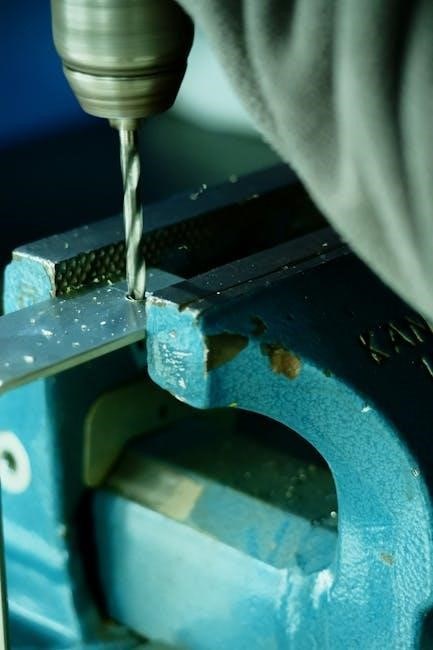
Troubleshooting Common Issues
Identify and resolve common problems like engine issues, low pressure, or leaks. Refer to specific sub-sections for detailed solutions and maintenance tips to ensure optimal performance.
7.1 Engine Not Starting
If the engine fails to start, first check the fuel level and ensure it’s the correct type. Verify the choke is in the proper position and the throttle is set correctly. Inspect the air filter for blockages or damage; clean or replace it if necessary. Check the spark plug for wear or fouling and replace it if needed. Ensure all hoses and connections are secure. If the issue persists, inspect the ignition system or fuel lines for leaks or damage. Consult a professional if problems continue after basic troubleshooting steps. Always follow safety guidelines when diagnosing engine issues to avoid accidents or further damage.
7.2 Low Pressure Output
If the power washer’s pressure output is low, first check for blockages in the nozzle, hose, or inlet filter. Clean or replace these components if necessary. Ensure the water supply is adequate, as low water pressure from the source can affect performance. Verify that the correct nozzle size is being used for the task. Inspect the high-pressure hose for kinks or damage and straighten or replace it as needed. If issues persist, check the pump for internal wear or debris buildup, which may require professional servicing. Always refer to the manual for specific guidance on diagnosing and addressing pressure-related problems to restore optimal function.
7.3 Leaks and Hose Damage
If you notice leaks or damage to the high-pressure hose or connections, immediately stop using the power washer. Inspect the hose for cuts, cracks, or abrasions, and replace it if damaged. Check all fittings and connections for tightness and ensure they are free from debris. Apply Teflon tape to threaded connections if necessary. For minor leaks, tighten the fittings or use a sealant recommended by the manufacturer. Regularly inspecting the hose and connections can prevent issues. Store the hose in a dry, protected area to avoid damage. If a leak persists after tightening, replace the faulty part to maintain safety and performance. Always refer to the manual for specific repair guidelines.

Warranty and Customer Support
Your Craftsman power washer is backed by a 2-year limited warranty covering manufacturing defects. Visit Craftsman.com to register your product and review full warranty details. For support, call 1-888-331-4569 or email customer.service@craftsman.com.
8.1 Warranty Registration
To ensure warranty coverage, register your Craftsman power washer within 30 days of purchase. Visit the official Craftsman website at Craftsman.com and navigate to the “Warranty Registration” section. Provide your product’s serial number, purchase date, and personal contact information. Retain your purchase receipt and a copy of the registration confirmation for future reference. Proper registration validates your warranty and expedites support services. For assistance, contact Craftsman customer support at 1-888-331-4569 or via email at customer.service@craftsman.com. Ensure all details are accurate to avoid delays in processing warranty claims.
8.2 Coverage Details
The Craftsman power washer warranty provides coverage for defects in materials and workmanship for a specified period. The standard warranty typically includes a 2-year limited warranty for residential use, covering parts and labor. This applies to the engine, pump, and other components. Wear and tear, misuse, or improper maintenance are excluded. The warranty period may vary for commercial use. For detailed coverage specifics, refer to the warranty agreement provided with your purchase or visit the Craftsman website. Coverage begins from the original purchase date and is non-transferable. Ensure proper maintenance to uphold warranty validity. For full terms, visit Craftsman.com.
8.3 Contact Information
For any inquiries, assistance, or support regarding your Craftsman power washer, contact our customer service team. You can reach us by phone at 1-800-426-9343, Monday through Friday, 8:00 AM to 8:00 PM EST. Additionally, visit the official Craftsman website at Craftsman.com for detailed product information, troubleshooting guides, and warranty support. For email inquiries, use the “Contact Us” form on their website. Mailing correspondence can be directed to Craftsman Customer Service, P.O. Box 286, Towson, MD 21286. Ensure to include your serial number and purchase details for expedited assistance. This information is subject to change, so always verify via the official website for the most current contact details.